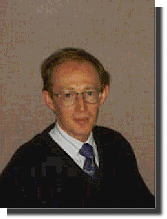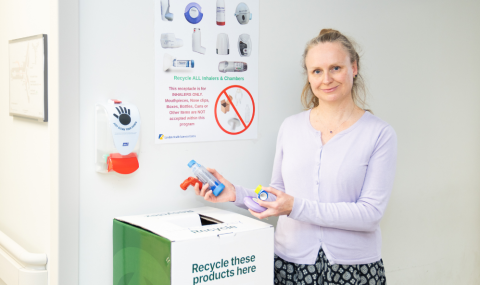Medical Physicist, Department of Oncology , University of Western Ontario
Medical Physicist , Verspeeten Family Cancer Centre
Telephone: 519-685-8605
Fax: 519-685-8658
Email: kevin.jordan@lhsc.on.ca
Research area:
New miniature radiation detectors, laser techniques for 3-D dosimetry and therapy
Lay Summary
My areas of research evolve by adapting previous experience in applied spectroscopy and applications of lasers to solving current problems in cancer therapy. The current projects are accurate measurements of radiation doses and introduction of photodynamic therapy to a clinical environment. Future problems will involve sensitive optical detection of cancerous cells and studies of the effects of combining X-rays, visible light and magnetic fields. The main funded research relates to development of water equivalent dosimetry for radiotherapy. This work has two distinct aspects; plastic fibre scintillators for point measurements and optical CT of radiochromic gels for 3D measurements.
Current Research Projects.
Tissue Equivalent Dosimetry
Tissue equivalent dosimeters are detectors which absorb and scatter radiation to the same degree as tissue. The goal of this program is to produce a simple and accurate dosimetry system for both routine clinical and specialized radiation physics measurements. One project focuses on the development and synthesis of efficient plastic scintillators for real-time point dose measurements with medical linear accelerators. These scintillator materials are being designed to have a long-lived phosphorescence emission. Time-delayed photon counting techniques are exploited to allow efficient discrimination of the detector signal from radiation induced prompt light that is generated in the coupling optical fibre. Initial results have demonstrated that this new type of material is superior to currently available detectors. Material optimization and physical evaluation of the detector's radiation response offer many diverse opportunities for research both in the basic and applied sciences.
'Optical CT' Device Which Can Measure Dose Distributions in Three Dimensions
A second tissue equivalent dosimeter for 3-D measurements is based on development of 'Optical CT' for radiochromic gels. Radiochromic gels have been employed for nearly fifty years to record dose distributions in 3-D. Thin sheets of those gels resulted in planar dose distributions which could be measured by optical absorption. Recently there has been significant research in using gels to record the dose distribution as a spatial distribution of ferric ions and to image this distribution with magnetic resonance techniques. This project's goal is to develop a radiochromic gel system which can be optically 'CT' scanned with inexpensive diode lasers. The reconstructed optical density will correlate to a true 3-D dose distribution in the tissue equivalent gel. The data will be used to verify the accuracy of commercial 3-D computer planning systems and sophisticated dose distributions in phantoms. This research involves development of suitable radiochromic gels which are optically stable and a laser scanning system. Optically stable means that the 'true' dose image does not degrade by diffusion on the time scale of recording and optical readout. This project is in collaboration with Dr. Jerry Battista and a graduate student, Robin Kelly, M.Sc.
'Optical CT' device which can measure dose distributions in three dimensions.
Photodynamic Therapy and Optical Biopsies
Another area of interest is photodynamic therapy (PDT) and optical biopsies. PDT is a photochemical approach to selective cell destruction. Photosensitive compounds become chemically reactive following absorption of visible light. After selective uptake of these compounds by cancerous cells, illumination with visible light results in lethal damage. This therapeutic mode is beginning to enter routine clinical practice. However, there is the potential for significant improvements in this therapy by the development of new photosensitizers, understanding of their chemical, optical and biological properties. These same photosensitizers also fluoresce following absorption of visible light. This fluorescence can be exploited to provide a sensitive technique for delineation of tumours. Knowledge of the extent of the disease will be used to make medical decisions concerning methods and evaluations of treatment therapies. To date noninvasive fluorescence imaging has been limited to superficial lesions. A goal of this project is to develop sensitive optical detection techniques for lesions at greater depths.
Selected Publications
- Evaluation of Ruby as a Fluorescent Sensor for Optical Fiber-Based Radiation Dosimetry, Kevin J. Jordan, Proceedings of Fluorescence Detection IV, SPIE Vol. 2705, 170-178 (1996).
Collaborators:
Dr. Jerry J. Battista, Director, Research and Education, LRCC
Research Group Members
Nik Avvakumov, Undergraduate term student



